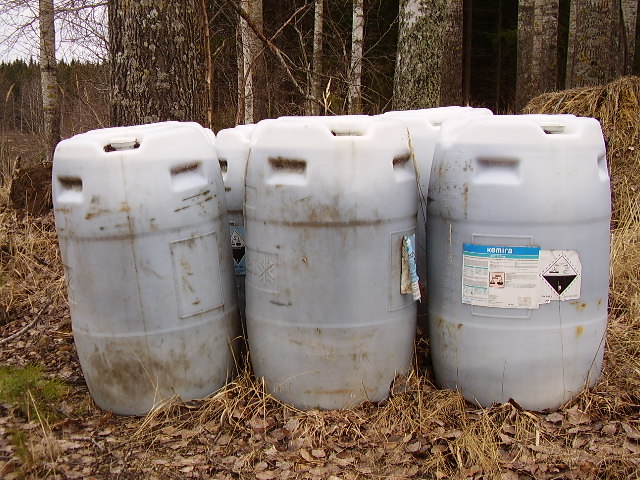AIV Fodder on:
[Wikipedia]
[Google]
[Amazon]
 AIV fodder is a kind of
AIV fodder is a kind of
silage
Silage is fodder made from green foliage crops which have been preserved by fermentation (food), fermentation to the point of souring. It is fed to cattle, sheep and other ruminants. The fermentation and storage process is called ''ensilage'', ' ...
. The AIV liquid is added to the green fodder to improve the storage. This is especially important during long winters. The process includes adding a dilute hydrochloric or sulfuric acid
Sulfuric acid (American spelling and the preferred IUPAC name) or sulphuric acid (English in the Commonwealth of Nations, Commonwealth spelling), known in antiquity as oil of vitriol, is a mineral acid composed of the elements sulfur, oxygen, ...
to newly stored grain
A grain is a small, hard, dry fruit (caryopsis) – with or without an attached husk, hull layer – harvested for human or animal consumption. A grain crop is a grain-producing plant. The two main types of commercial grain crops are cereals and ...
. Increased acidity stops harmful fermentation
Fermentation is a type of anaerobic metabolism which harnesses the redox potential of the reactants to make adenosine triphosphate (ATP) and organic end products. Organic molecules, such as glucose or other sugars, are catabolized and reduce ...
and has no adverse effect on the nutritive value of the fodder or the animals it is fed to.
A Finnish researcher of chemistry and agriculture Artturi Virtanen invented the method and named it after his initials (Artturi Ilmari Virtanen). First commercial AIV fodder products were introduced in 1929 and the method was patented in 1932. In 1945 Virtanen became a Nobel Prize
The Nobel Prizes ( ; ; ) are awards administered by the Nobel Foundation and granted in accordance with the principle of "for the greatest benefit to humankind". The prizes were first awarded in 1901, marking the fifth anniversary of Alfred N ...
laureate in chemistry "for his research and inventions in agricultural and nutrition chemistry, especially for his fodder preservation method" (AIV fodder).
Modern version of the AIV liquid consist of 76% formic acid
Formic acid (), systematically named methanoic acid, is the simplest carboxylic acid. It has the chemical formula HCOOH and structure . This acid is an important intermediate in chemical synthesis and occurs naturally, most notably in some an ...
, 5.5% ammonium formate
Ammonium formate, NH4HCO2, is the ammonium salt of formic acid. It is a colorless, hygroscopic, crystalline solid.
Reductive amination
Acetone can be transformed into isopropylamine as follows:
:CH3C(O)CH3 + 2 HCO2− +NH4 → (CH3)2CHNHCHO + 2 ...
, and 18.5% water
Water is an inorganic compound with the chemical formula . It is a transparent, tasteless, odorless, and Color of water, nearly colorless chemical substance. It is the main constituent of Earth's hydrosphere and the fluids of all known liv ...
. The liquid is strongly acidic, thus care is needed in the handling of the liquid.
In the early days the green fodder was dropped into a hole dug into the ground and the AIV liquid was poured on top of it. Today AIV fodder is created automatically by the harvesting machinery. During the process the liquid is added to the green fodder. 3000 kg of green fodder requires about 5 liters of AIV liquid. The ready AIV fodder may irritate skin but is not dangerous to the animals it is fed to or humans.
References
{{DEFAULTSORT:Aiv Fodder Fodder Finnish inventions